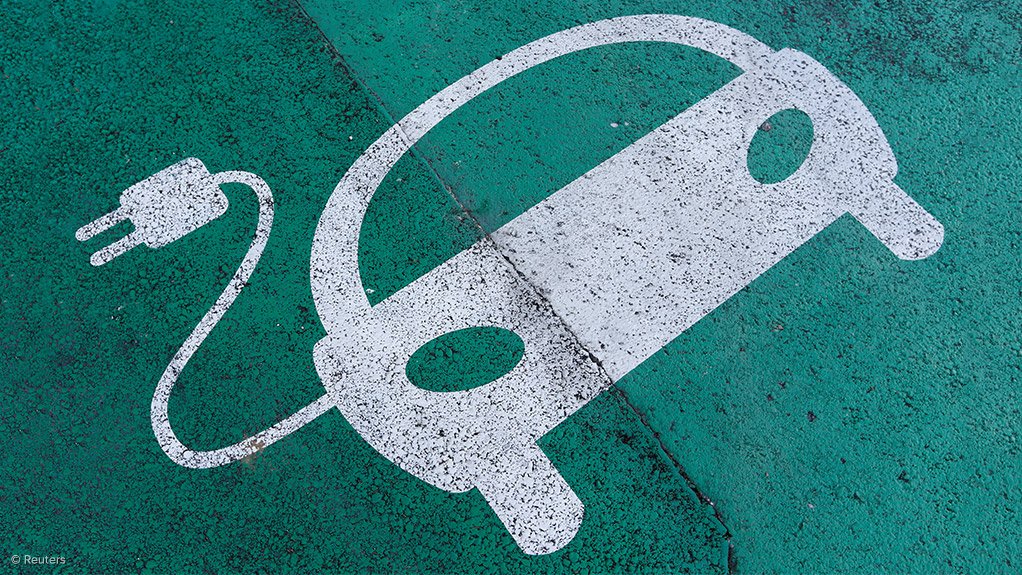VANCOUVER (miningweekly.com) – Cobalt supply constraints, coupled with a never-before-seen boom in the adoption rate of electric vehicles (EV) across the globe, have conspired to create an ideal market in which a pure-play cobalt investment and participation vehicle's profits can outpace its peers.
Cobalt, a critical ‘energy metal’ used to make lithium-ion batteries, has become the backbone of the ‘Fourth Industrial Revolution’ and has seen a 150% price hike over the last 12 months, something Cobalt 27 Capital chairperson, director and CEO Anthony Milewski saw coming a long way off.
“We took a look at cobalt several years ago and worked on a strategy on how best to invest in the EV uprising. Based on the metal’s supply constraints, we expected cobalt would be one of the first movers among the basket of energy metals,” he stated in an interview with Mining Weekly Online.
Cobalt is critical to battery chemistries; the cathode represents about 26% of the battery’s cost and is important for improving energy density and performance.
Milewski explained that the rising cobalt price is mainly attributable to political instability in the Democratic Republic of Congo (DRC), which, with about 49% of the global cobalt reserves, is the world’s largest producer. Questions over ethical resource sourcing also swirl around the DRC’s cobalt supply. Copper and nickel mine closures have further contributed to lower supply, where it is mainly produced as a by-product.
China has tight control over refined output, currently producing more than half of the world’s refined cobalt and 85% of cobalt oxides, salts and other chemicals.
Drawing on his previous involvement and successful ventures, such as creating the Uranium Participation Corporation, which invests substantially all of its funds raised through equity offerings in physical uranium – the primary objective being to profit off of the appreciation in the value of its uranium holdings – Milewski helped create Cobalt 27 to provide a pure-play investment vehicle along similar tenets.
Cobalt 27 has amassed physical cobalt holdings of just under 2 200 t, which is valued at about C$187-million – the largest cobalt holding outside of China. It is not a miner or explorer, and was created specifically to give institutions and retail investors the opportunity to invest directly in the metal, excluding the significant exploration and development risks miners have to deal with.
EXPANDING MARKET
So hot is investment demand in the cobalt space that, when Cobalt 27 made its debut on the TSX-V Exchange in June, it raised C$200-million – the largest initial public offering since 2012.
“Everybody was waiting for India’s gross domestic product growth to prop up the next commodity super cycle, but, at the end of the day, no one saw that the next super cycle is indeed being driven by the emerging EV market,” Milewski said.
According to him, lower battery costs and higher productivity will support EV adoption rates going forward, and he is forecasting the deployment of 140-million EVs by 2030, increasing to almost 900-million by 2050, compared with the estimated one-million today.
Milewski also pointed out that the Paris Declaration on Electro-Mobility and Climate Change has set a target to have 100-million EVs on the road by 2030, the construction of which will require about four times the current cobalt output.
Demand is expected to rise by a compounded annual growth rate (CAGR) of about 6.9% from 2016 to 2020, with cobalt demand in lithium-ion batteries expected to grow at 11.7% CAGR from 2016 to 2022, Milewski said.
The advent of mobile electronic devices such as smartphones presaged the dramatic rise in cobalt demand, using on average about 5 g to 20 g of the metal per smartphone. However, EVs scaled that demand exponentially, using about 4 kg to 14 kg per vehicle. Seventy-three per cent of EVs sold in 2016 contained cobalt-containing batteries, he said, while massive grid-connected energy storage systems provide another avenue of growth for an already constrained market.
Milewski advised that forecasts point toward EVs reaching cost parity with internal combustion engines by 2025, and roughly 140 new Tesla-sized gigafactories will be required by 2035 to satisfy battery demand, in an optimistic scenario.
Cobalt 27 has also accumulated cobalt royalties on seven exploration-stage properties containing cobalt, providing another level of value upside for its investors. Milewski favours streams and royalties over other commodity investments, because of the exposure to earnings and dividends, resource growth and production growth, while avoiding direct exposure to increasing capital, as well as operating and environmental costs.
According to Milewski, global cobalt supplies of a hair under 100 000 t entered deficit-territory during 2016 and the supply gap is expected to widen significantly going forward. High-grade cobalt prices on Wednesday escalated sharply to $31.07/lb – the highest in nine years.
“Even significant increases in cobalt demand would likely preclude any material increase in production in the current environment, as new copper and nickel supply has been challenged,” Milewski stated.
Importantly, Milewski stressed that Cobalt 27 boasts one of the lowest expense ratios among its peers at ~0.9%, outperforming the likes of Osisko Gold Royalties, Sandstorm Gold and AuRico Metals.
Since July, Cobalt 27's equity has gained about 36% on the TSX-V, to change hands at about C$12.40 a share.
Edited by: Samantha Herbst
Creamer Media Deputy Editor
EMAIL THIS ARTICLE SAVE THIS ARTICLE
ARTICLE ENQUIRY
To subscribe email subscriptions@creamermedia.co.za or click here
To advertise email advertising@creamermedia.co.za or click here













